By Cultural Correspondent | April 2025
Golden Threads of Tradition: The Legacy of Assamese Muga Sador Mekhela in Bihu Celebrations
In the vibrant northeastern state of Assam, where the Brahmaputra flows like a silver ribbon through emerald landscapes, the advent of spring is not just a seasonal change — it’s a cultural awakening. With the blossoming of “kopou phool” (foxtail orchids) and the rhythmic echoes of dhol, pepa, and gogona, the Assamese people prepare to celebrate Rangali Bihu — the most joyous and colorful festival in their calendar. At the heart of this celebration is not just dance and music, but also the proud display of Assam’s most prized handloom heritage: the Muga Sador Mekhela, traditionally worn by Assamese girls and women during Bihu.
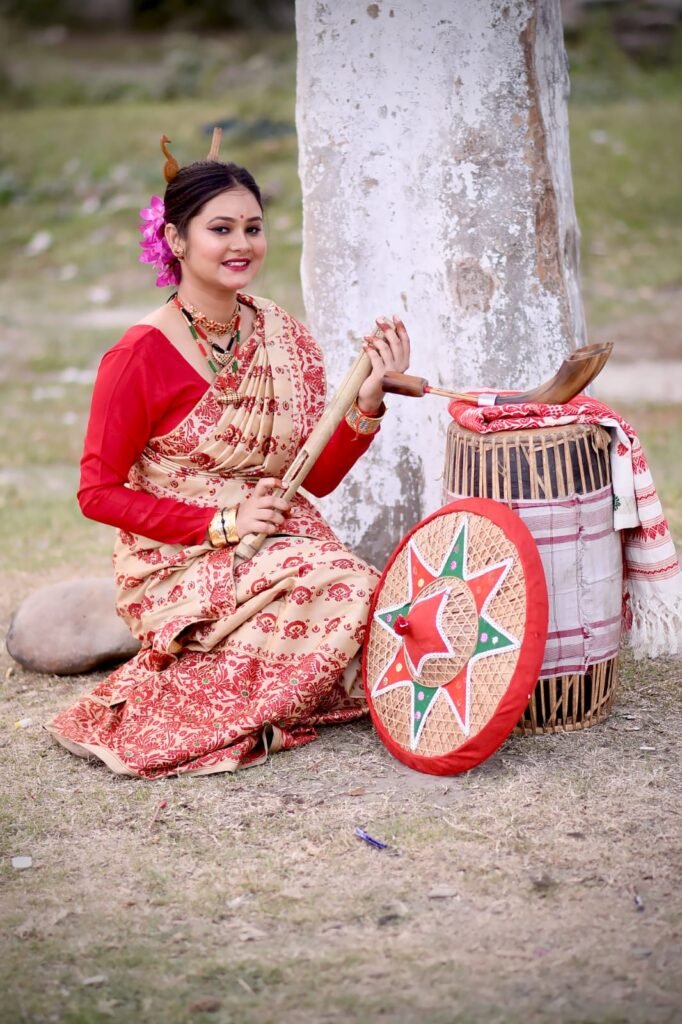
The Golden Fabric of Assam
The Muga silk, known for its natural golden sheen and unmatched durability, is a textile legacy that dates back over 2,000 years. Derived from the larvae of the Antheraea assamensis silkworm, which is endemic to Assam, Muga silk is a symbol of royal elegance. It was once reserved for the aristocracy and royal households of the Ahom dynasty and continues to hold a sacred space in Assamese identity.
The Muga Sador Mekhela — often simply referred to as Chadar Mekhela — consists of two main pieces:
- Mekhela, the cylindrical lower garment draped from the waist down.
- Sador, the upper drape gracefully wrapped around the shoulder and chest.
During Rangali Bihu, Assamese girls don Muga Mekhelas woven with intricate red, green, and golden motifs inspired by nature — creepers, flowers, birds, and traditional Assamese symbols. These designs are not just decorative; they carry centuries of folklore and regional storytelling passed from mother to daughter through the loom.
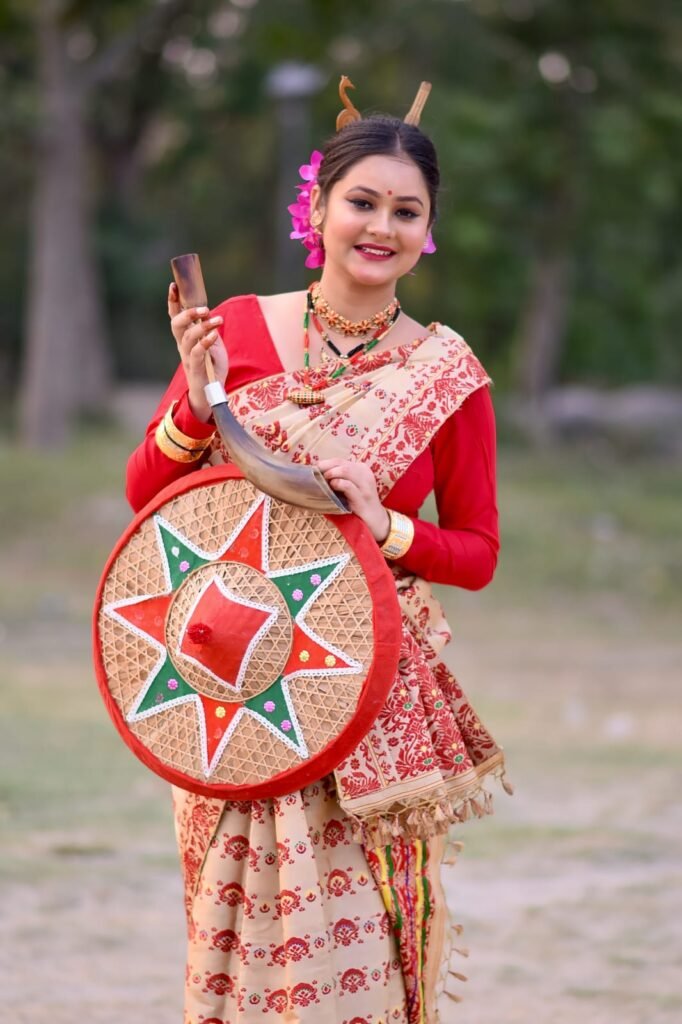
Adorned in Tradition: The Jewelry of Bihu
No Bihu ensemble is complete without the signature Assamese jewelry, which dates back to the Ahom and Koch kingdoms. During Rongali Bihu, young women embellish their looks with Dhulbiri, Joonbiri, and Golpota, each piece reflecting Assam’s indigenous aesthetics and artisanal brilliance.
- Dhulbiri: Shaped like a miniature drum, this earring is symbolic of the dhol, the very soul of Bihu music. It’s worn proudly, representing rhythm and celebration.
- Joonbiri: Inspired by the crescent moon, joon in Assamese, this ornament is symbolic of feminine beauty and nature’s grace.
- Golpota: A grand choker-style necklace made of golden motifs and often encrusted with vibrant colored beads, worn close to the neck — a crown jewel of Bihu fashion.
These ornaments are traditionally handcrafted using gold or gold-plated metal and often passed down as heirlooms.
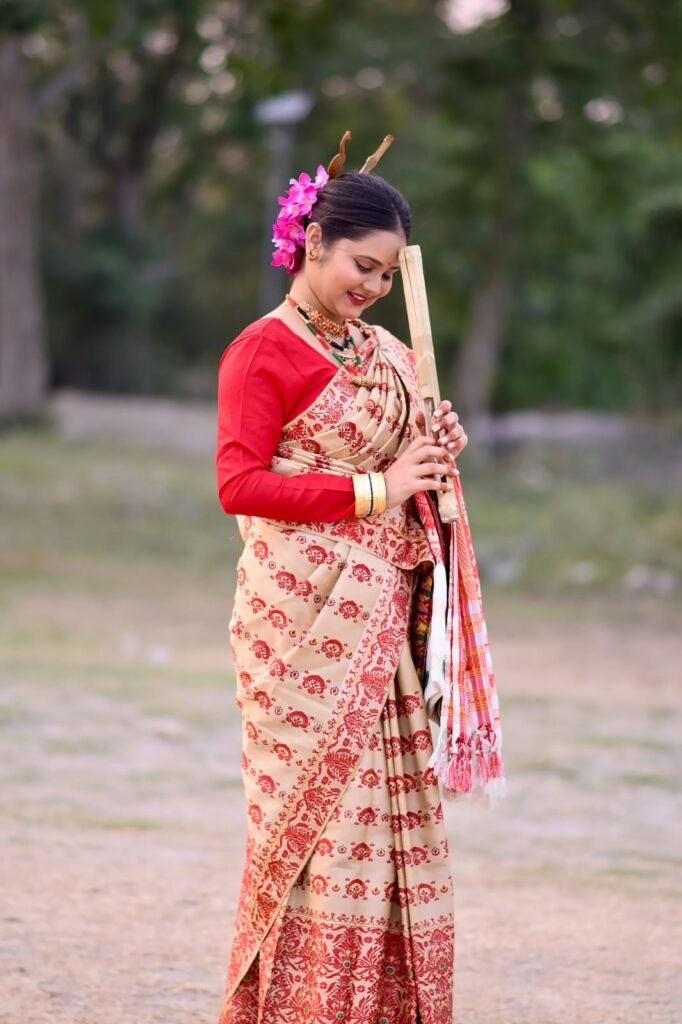
Dance of the Fields: Music and Movement
The cultural canvas of Bihu is incomplete without its iconic instruments. Girls and boys gather in open fields, clapping, singing, and dancing in a synchrony that celebrates fertility, love, and nature. The soul-stirring rhythm of:
- Dhul (Drum) — sets the heartbeat of Bihu.
- Pepa — made from buffalo horn, its piercing notes mimic the call of spring.
- Gogona — a bamboo reed instrument played by women, producing a buzzing sound that complements the beats and creates a hypnotic musical backdrop.
Each instrument, handcrafted using natural materials, speaks of Assamese ingenuity and harmony with nature.
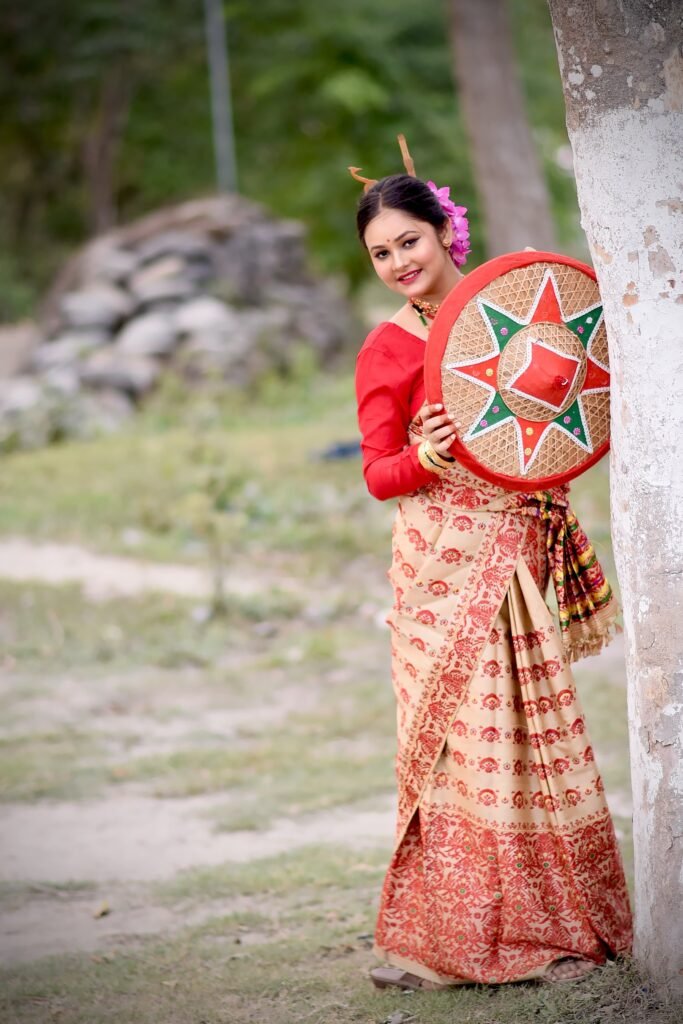
The Symbolism of Bihu Attire
The act of wearing the Muga Sador Mekhela during Rangali Bihu is not merely about tradition or aesthetic. It’s an act of cultural assertion. In a world veering toward homogenized fashion, the Assamese girl — her forehead adorned with bindi, hair tied with red ribbons, draped in golden silk, and dancing barefoot to the beats of dhul — is a living embodiment of continuity, resistance, and pride.
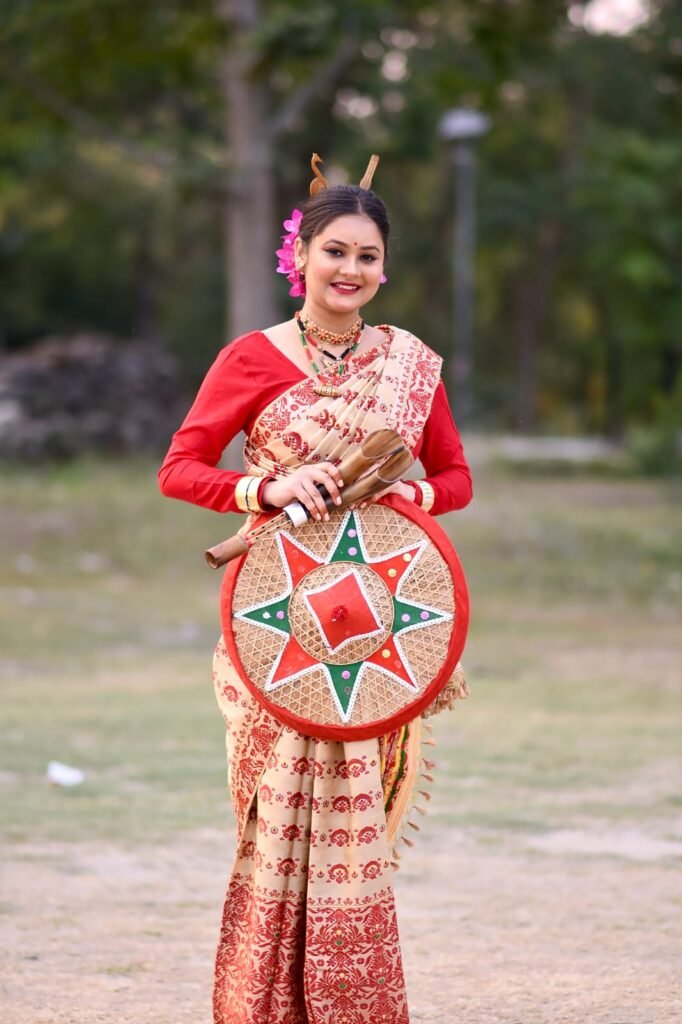
The Loom and the Legacy
The preservation of Muga silk weaving is largely attributed to women weavers, especially in districts like Sualkuchi, often called the “Manchester of the East.” Here, looms echo with the dreams and diligence of generations. As Bihu arrives each year, demand for handwoven Muga Mekhelas soars, not just in Assam but across diasporic communities worldwide.
Yet, the survival of this tradition faces challenges — from industrial fabric imitations to dwindling sericulture due to climate change. Cultural advocates now call for increased support for local artisans, geographical indication (GI) protections, and sustainable weaving practices.
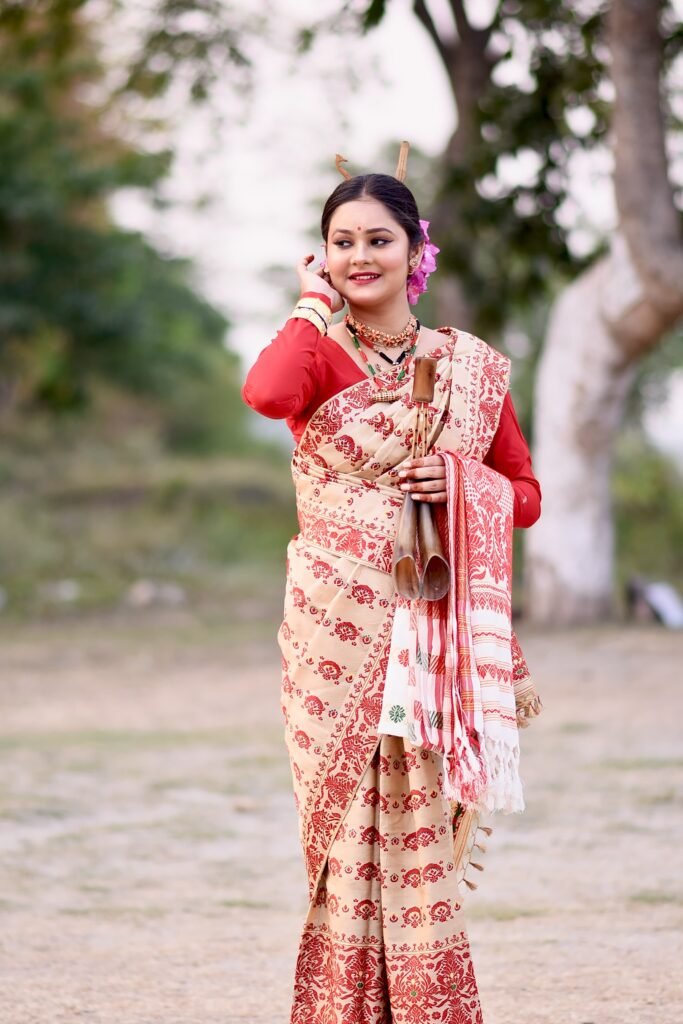
A Celebration Beyond Aesthetics
Rangali Bihu is not just a festival — it is a living museum of Assamese identity. The Muga Sador Mekhela, gleaming in the sunlight, adorned with Dhulbiri and Joonbiri, and accompanied by the joyous sounds of Pepa and Gogona, is a symbol of more than beauty — it is resilience, heritage, and the undying rhythm of a people deeply rooted in their land and traditions.
As the kopou blooms and fields sway with the music of celebration, every Assamese girl in her Muga ensemble becomes a storyteller — weaving past, present, and future into golden threads.
Joyous Rongali Bihu to all!
Bihu Naams go on, but the tradition remains eternal.
অসমীয়া জীয়ৰী । অসমীয়া ছোৱালী


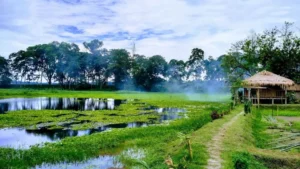


More Stories
Flavors of the Brahmaputra
Hidden Gem of the Northeast
বিজয়লক্ষ্মী বৰাৰ অনন্য কাহিনী